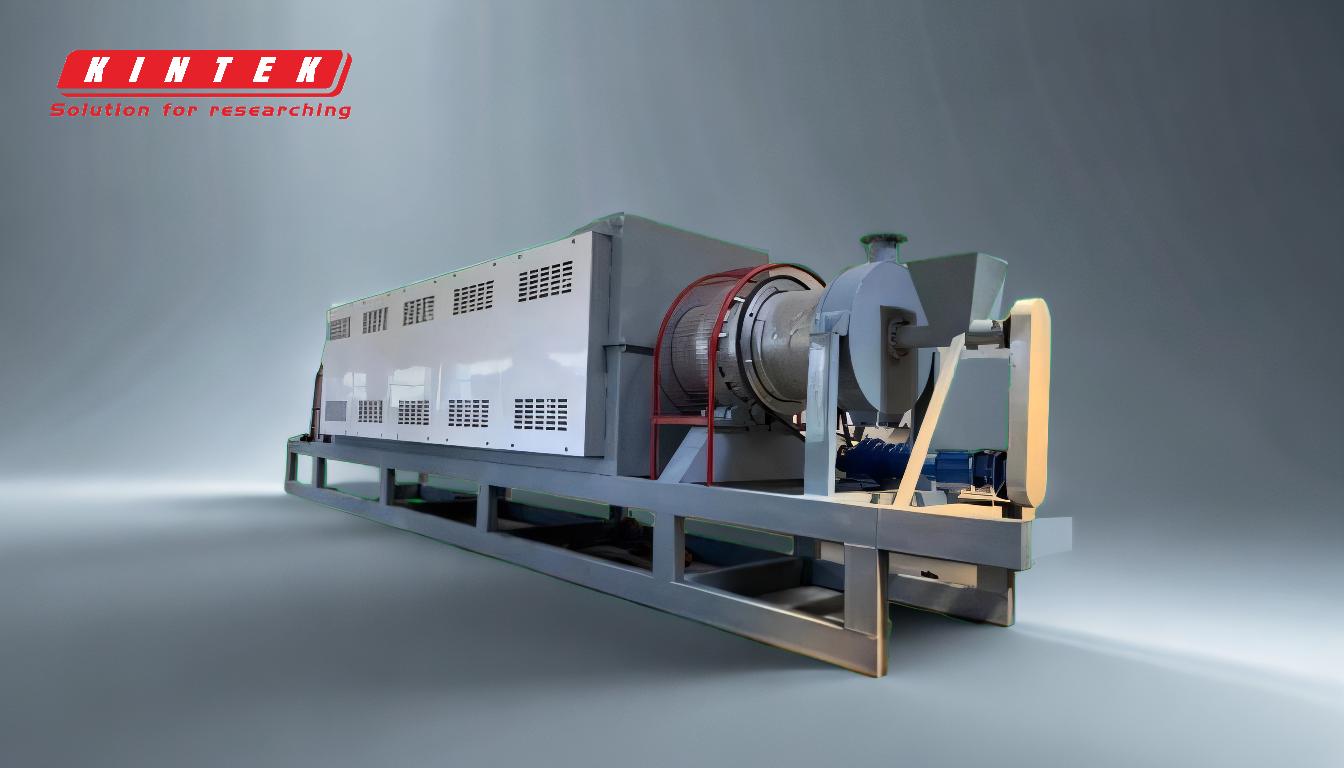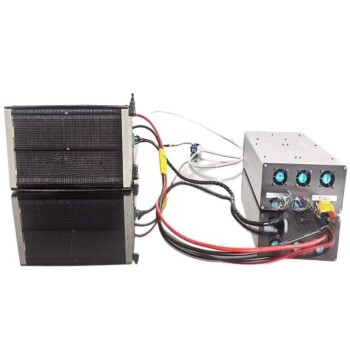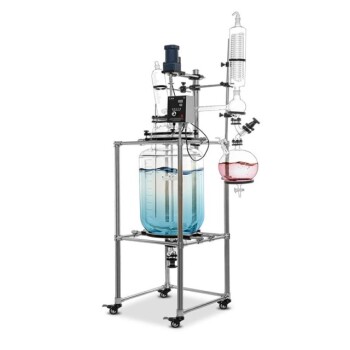Pyrolysis plants are designed to convert waste materials into valuable products through thermal decomposition in the absence of oxygen. The primary outputs of a pyrolysis plant include fuel oil, carbon black, steel wire, and syngas. These products vary depending on the type of feedstock used, such as waste tires, plastics, or oil sludge. The fuel oil can be further refined into diesel, while carbon black and steel wire are valuable by-products used in various industries. Syngas, a mixture of combustible gases, is often reused within the plant to generate heat energy for the process. The specific yield of each product depends on the composition of the input material, with waste tires typically producing 35-45% oil, 30-35% carbon black, 8-15% steel wire, and 8-15% syngas.
Key Points Explained:

-
Primary Products of Pyrolysis Plants:
- Fuel Oil: The main liquid product of pyrolysis, often referred to as pyrolysis oil, can be used as an alternative fuel or further refined into diesel. Its yield varies based on the feedstock, with waste tires producing 35-45% oil.
- Carbon Black: A solid residue, carbon black is a valuable by-product used in rubber manufacturing, ink production, and as a reinforcing agent in tires. It typically constitutes 30-35% of the output from waste tires.
- Steel Wire: Recovered from waste tires, steel wire accounts for 8-15% of the output and is recycled for use in steel production.
- Syngas: A synthetic gas mixture containing combustible gases like carbon monoxide, hydrogen, and methane, syngas is often reused within the plant to generate heat energy for the pyrolysis process.
-
Variability Based on Feedstock:
- Waste Tires: The most common feedstock for pyrolysis, waste tires yield fuel oil (35-45%), carbon black (30-35%), steel wire (8-15%), and syngas (8-15%).
- Waste Plastics: Pyrolysis of plastics primarily produces fuel oil and carbon black, with negligible amounts of steel wire.
- Oil Sludge: This feedstock generates pyrolysis oil, water, and sand, with the oil content varying based on the sludge's composition.
-
Applications of Pyrolysis Products:
- Fuel Oil: Used as an alternative fuel in industrial boilers, furnaces, and power plants. It can also be refined into diesel for use in vehicles.
- Carbon Black: Widely used in the rubber and tire industry, as well as in the production of inks, paints, and plastics.
- Steel Wire: Recycled and used in steel manufacturing, contributing to resource efficiency.
- Syngas: Primarily used within the pyrolysis plant to sustain the thermal process, reducing external energy requirements.
-
Environmental and Economic Benefits:
- Waste Reduction: Pyrolysis plants help reduce the volume of waste materials, such as tires and plastics, that would otherwise end up in landfills.
- Resource Recovery: Valuable materials like steel wire and carbon black are recovered and reused, promoting a circular economy.
- Energy Generation: Syngas produced during pyrolysis can be used to generate heat and electricity, enhancing the plant's energy efficiency.
-
Challenges and Considerations:
- Feedstock Variability: The composition of the input material significantly affects the yield and quality of the products. Consistent feedstock quality is essential for optimal performance.
- Emission Control: Proper handling of syngas and volatile organic compounds (VOCs) is necessary to minimize environmental impact.
- Market Demand: The economic viability of a pyrolysis plant depends on the demand for its products, such as fuel oil and carbon black, in local and global markets.
In summary, pyrolysis plants offer a sustainable solution for waste management by converting waste materials into valuable products like fuel oil, carbon black, steel wire, and syngas. The specific output and applications of these products depend on the type of feedstock used, highlighting the importance of feedstock selection and process optimization.
Summary Table:
| Product | Yield (Waste Tires) | Applications |
|---|---|---|
| Fuel Oil | 35-45% | Alternative fuel, refined into diesel for vehicles and industrial use. |
| Carbon Black | 30-35% | Used in rubber manufacturing, ink production, and as a reinforcing agent. |
| Steel Wire | 8-15% | Recycled for steel production, contributing to resource efficiency. |
| Syngas | 8-15% | Reused within the plant to generate heat energy, reducing external energy needs. |
Interested in learning more about pyrolysis plants and their benefits? Contact us today for expert advice!














